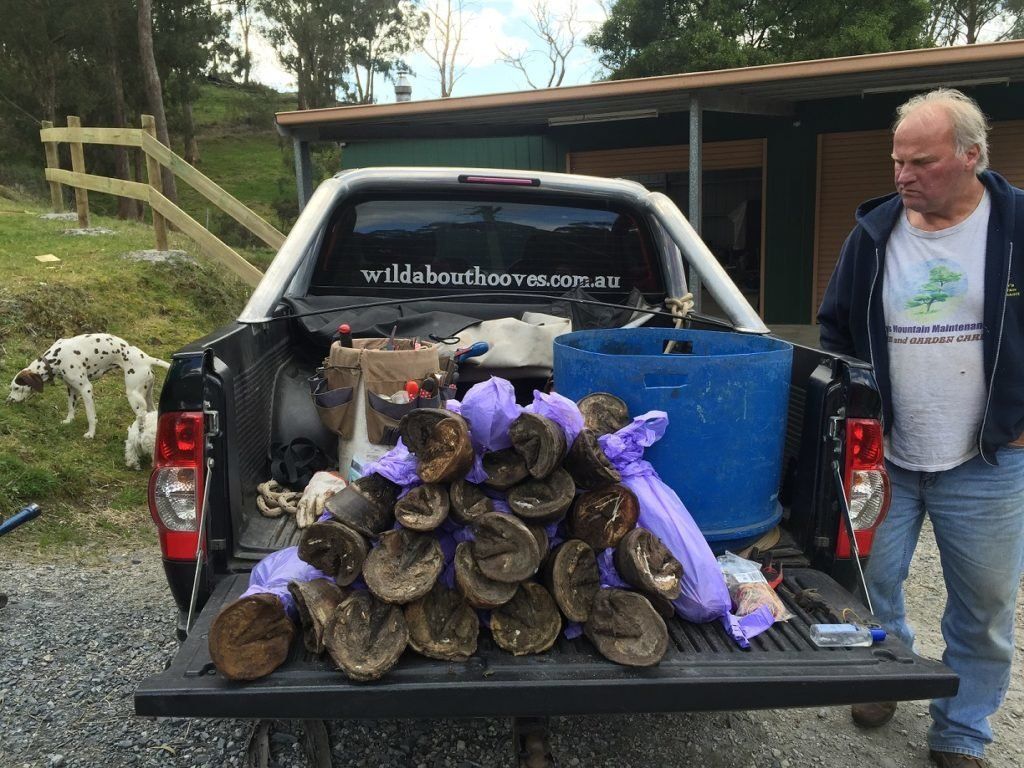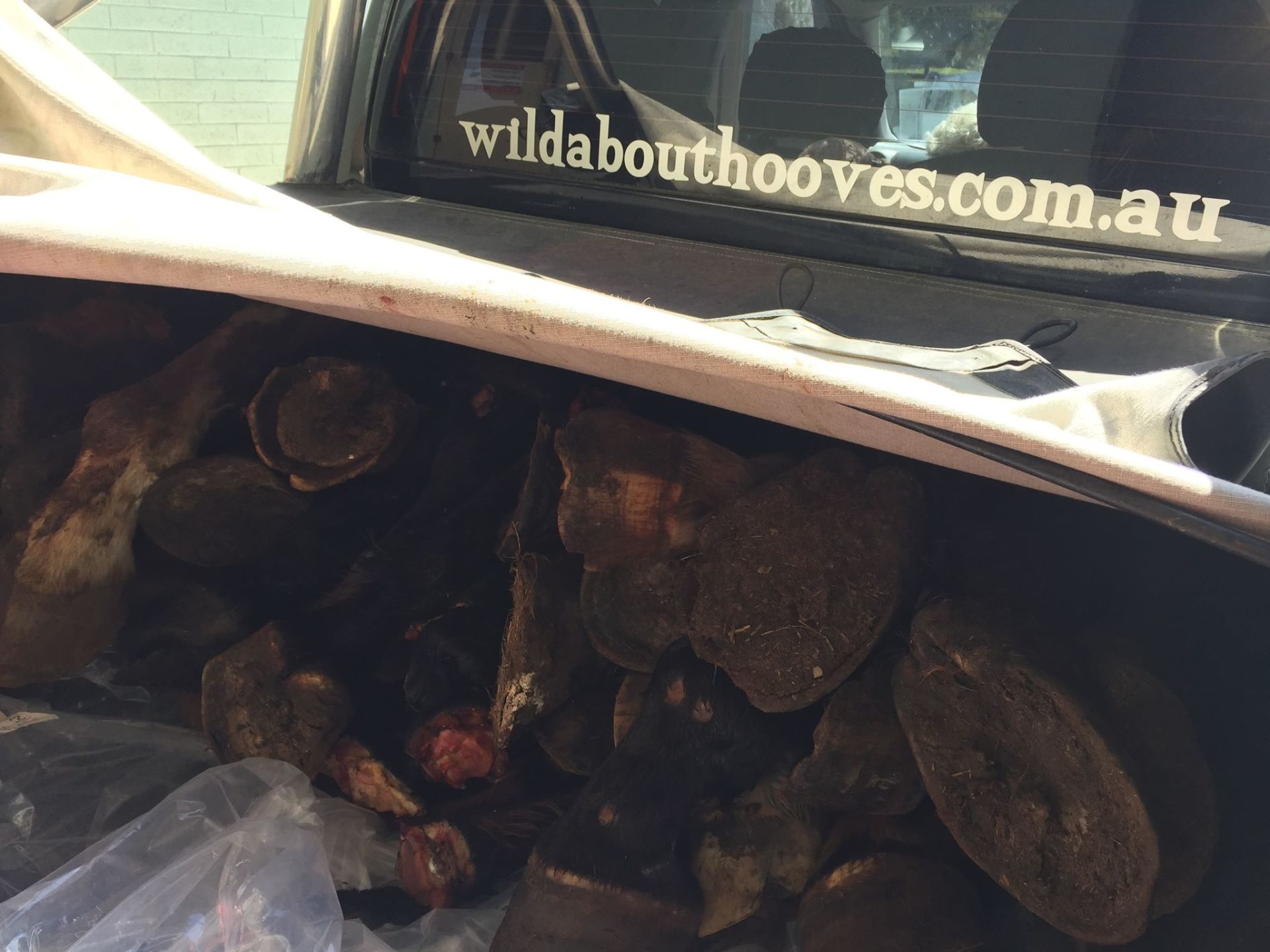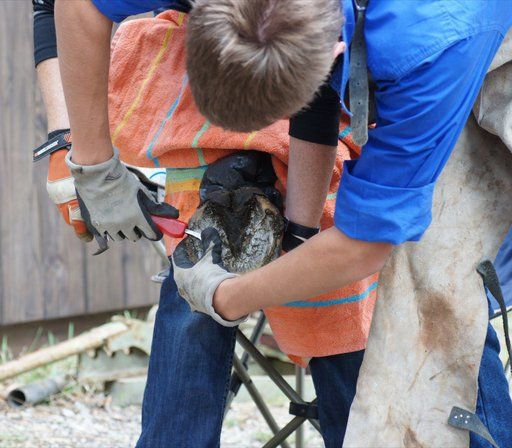THE CADAVER HORSE LEGS
Wild About Hooves • 7 May 2017
It’s a word that gets your attention, conjuring up an image of a dead horse and its legs being chopped off.
It especially gets your attention if you’re going to be meeting one soon—which is what participants of a Wild About Hooves’ Learn to Trim Workshop get to do.
It’s part rite of passage, part personal test, but trimming and dissecting cadaver legs is always the subject of anticipation and apprehension. Almost every hoof care student wonders how he or she will react when it’s time to start trimming a dead horse leg.
Students are apprehensive to start, in fact some say they don’t want to participate.
Jen Clingly, director of Wild About Hooves highlights in her introductory lecture. “This course is a little different – it’s really hands on and we pride ourselves on giving you the practical skills and knowledge to be able to maintain your own horses hooves. But to gain this experience you will be working on a number of cadaver legs. It’s an unusual medium to work with but they offer a great opportunity to hone in your tool skills without getting kicked or bitten or struggling to position yourself comfortably under a live horse.
Firstly, all students gain a solid understanding of the distal limb anatomy of the horse, which gives them confidence to trim safely to the landmarks on the hoof .
Clingly likes to ask that students acknowledge for a few moments, the horses and to honor their legs for this opportunity to study and learn hoof care.
Clingly admits with a smile that her main job of the day is to keep the cadaver legs under control. She bags them to disguise them and to make working on them easier. The bag is taped at the fetlock to allow students to just focus on the hoof.
Wild About Hooves trainers guide and supervise students in using the trimming tools, recognising landmarks on the hoof, recognising healthy hooves and recognising pathologies in the hoof. They get started with just cleaning out the cadaver hoof and preparing their trim strategy.
With the hoof picks in action, knives and rasps at the ready, the workshop turns into a group of bowed heads and hunched shoulders. Everyone seems focused on the task at hand. Occasionally a head pokes up above the huddle of shoulders with a question for an instructor.
As the workshop and afternoon progresses, students became more comfortable and circulate around, examining each other’s cadavers, beginning to get a sense of the biological variation among the horse’s hooves.
Sometimes a student will turn white. Sometimes the smell creates disgruntled noises.
Adverse reactions to cadavers are hardly unusual. About 5 percent of students experience some sort of emotional upset. “Typically they adjust and they come to grips and are not burdened or troubled by it on a long term basis.”
Participants of the workshop have taken the first of many major steps to becoming hoof trimmers. At the end of the day they go home capable and competent to maintain their own horses hooves.
Some participants even take home their cadaver leg to show family or friends what they learnt, other students take them home to bury them and dig them up later to make an anatomical bone specimens, others take them as a present for their dogs.
But best of all, they accomplish the hard feat (excuse the pun) of trimming a cadaver horse leg.
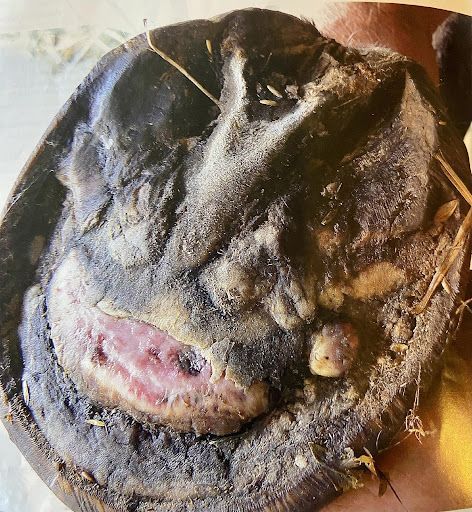
Laminitis kills thousands of horses every year, and leaves thousands of others debilitated with lameness. It will and can affect any horse. And for you, the horse owner it can be devastating: you feel guilty and heartbroken at your horses suffering, confused with all the information as it is typically explained by professionals in scientific terms that can be difficult to understand, costly veterinary bills and you have the major task of nursing your horse back to recovery. . Unseasonal weather patterns around Australia with abundant rain and sunshine saw laminitis at a near epidemic last year. The reason being, that the environmental conditions can trigger increases in the sugar, starch and fructan. These collectively known as non-structural carbohydrates can cause laminitis in any horse or pony. Alarm bells ring this spring!! Be warned and be prepared, for prevention is better than cure.

The extraordinary relationship between humans and the horse has been running since before the birth of Christ. Indeed, there is evidence our domestication of horses goes as far back as 3500 BC. And ever since we recognised the utilitarian value of the horse, there has been the horseshoe. The use of horseshoes has become an almost unquestioned tradition. Humans have been nailing shoes onto horses’ hooves for well over a thousand years. Who can remember back to a time otherwise?
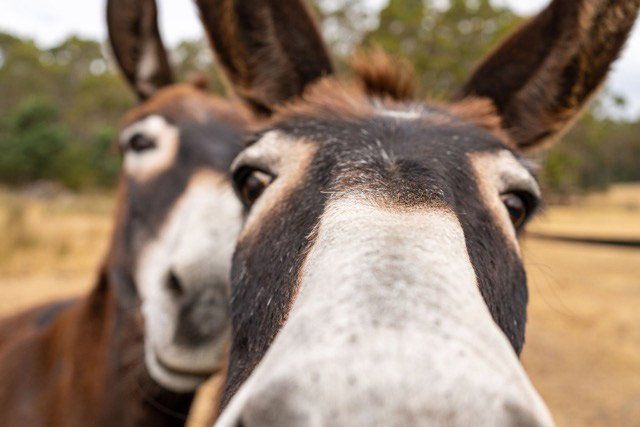
There is nothing quite like getting hands-on when you are learning the art of trimming horses hooves. Wild About Hooves popular weekend workshops allow their students plenty of opportunity to ‘have a go’ in a situation as close to real-life. Students start practicing by trimming horse’s cadaver legs, they also practice positioning themselves under a horse safely and ergonomically. Students retain more information when they physically practice, instead of just seeing or hearing it. However, when a worldwide pandemic puts a stop to everything, and public events banned, border restrictions in place, and other impacts make it impossible to travel and train in person, Jen Clingly and Jeremy Ford decided to adapt and reinvent their learn to trim courses. “We can still bring this “learn-by-doing principle” of adult learning into what we are teaching regardless of whether we teach online or off line.” Clingly highlights. “But it is challenging especially for us to articulate clearly and demonstrate without the constant interaction of questions and answers that face to face provides.” When it comes to traditional face-to-face training, the principle of maintenance hoof trimming is easy to grasp and execute. So how do the team at Wild About Hooves deliver their online hoof care course? How do students learn to do it themselves in an environment where they are not physically present to perform practical exercises? Online teaching requires very different approaches to teaching face-to-face for obvious reasons. Wild about Hooves shares 4 ways of teaching a practical skill via online training. 1. Get as Visual as Possible When it comes to practical training, or teaching learners new skills, we created loads of visual with power point lectures and ‘live demonstrations of trimming.’ People learn in many different ways – visual, auditory and kinaesthetic. By delivering information online, we want to make sure we enable all the different type of learners to engage with our hoof care principles. Providing visual diagrams, animations and dot-pointing our information all helps alongside a video showing a real life demonstration of the skill in a environment that is as close to what will happen out in the field. We try and get the camera in close to the hoof to show the trim process step by step. When the brain can ‘see’ how something is done before it is attempted independently, the chance of success are much higher than just reading or hearing about it. 2. Get on Camera Much out of our comfort zone, we got ourselves on camera. People like people, and it can significantly enhance the engagement, retention and completion rates of our course if our learners can see us talking to them. We don't have the budget for a professionally filmed training video, but we put together some good ‘how to’ trim footage and this also enables people to engage by watching, listening and following along as the training video plays. 3. Self Paced Learning Students can work at their own pace through the series of lessons. They can stop when they are tired or need a break and then get back to it when the time is right. Also they can go back and revisit any of the lessons to reinforce their learning. The lesson range is interesting and covers introducing the trainers and their backgrounds, the distal limb anatomy of the horse, how the hoof works, barefoot trimming, step by step hoof trimming, the relevance of the wild horse study, Australia’s desert brumbies, tools for trimming, what to look for when you trim horses hooves. All lessons are interwoven with film footage and powerpoint lectures and then access to further resources. It’s user friendly and feedback has been sensational. 4. Trainers Are Accessible and Can Be Contacted to Provide Advice and Feedback The team at Wild About Hooves is contactable to help students who need further information and guidance. Best of all with a team of over 150 hoof care practitioners in Australia with ACEHP: The Australian Certified Equine Hoof Care Practitioners there is usually someone who students can touch base with to learn more from or who they can book in to check on their trimming and horses hooves. Check out the link and join the team virtually! https://hooftrimmingonlinecourse.podia.com/

